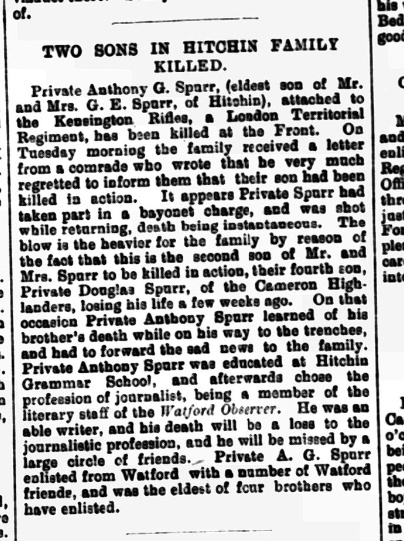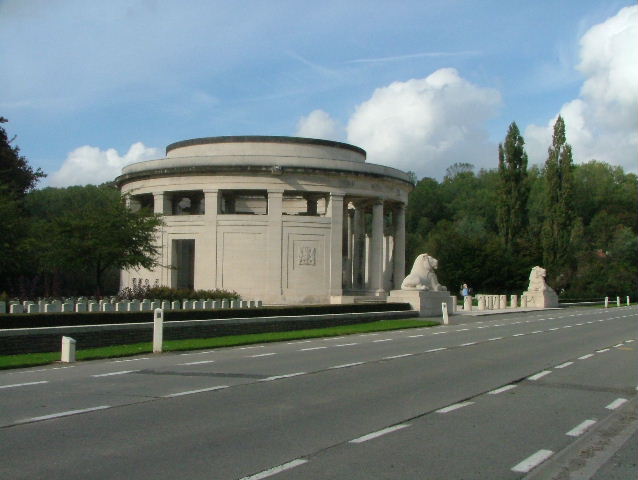Name
Anthony George Spurr
1889
Conflict
First World War
Date of Death / Age
09/05/1915
26
Rank, Service Number & Service Details
Private
2924
London Regiment *1
13th (County of London) Bn.
Awards: Service Medals/Honour Awards
1914 /15 Star, British War and Victory medals
Cemetery/Memorial: Name/Reference/Country
PLOEGSTEERT MEMORIAL
Panel 10.
Belgium
Headstone Inscription
Not Researched
UK & Other Memorials
Watford Borough Roll of Honour, St Michael and All Angels Church Memorial, Watford, Watford Printers Memorial, Watford, Hitchin Town Memorial, St Mary’s Church Roll of Honour (Book), Hitchin, Stained Glass Window, Hitchin Boys Grammar School
Pre War
Wartime Service
Additional Information
After his death £5 5s 3d pay owing was authorised to go to his father on 18 October 1915, then 15s on 3 February 1916. Later, a war gratuity of £3 was authorised to be paid to him on 13 August 1919.
The local paper reported that Anthony was on his way to the trenches with his battalion when they passed the Cameron Highlanders coming away. Knowing his brother Douglas, was in that regiment he made inquiries and received the sad news that his brother was dead. He fell out of the lines and made a more enquiries of other men in the Camerons and learnt that his brother had been instantaneously killed by a shell on March 10th or 11th. Sadly Anthony was himself killed about two months later.
Anthony was the second son off 3 to be killed . Douglas Bateman spur was killed 10 March 1915 and Walter Gunnis Spurr on 22 August 1916.
Unfortunately, Anthony’s Service Record appears to be one that did not survive the World War Two bombing. There are articles about Anthony in the West Herts and Watford Observer dated 27 March 1915, 22 May 1915, 8 January 1916 and 9 September 1916; also in the Watford Illustrated dated 22 May 1915. Anthony and his younger brother, Douglas B. Spurr, were the first fatal casualties from the Hitchin Grammar School during the war.
*1 Believed more correctly, (County of London) Bn. London Regiment (Kensington).
Acknowledgments
Sue Carter (Research) and Watford Museum (ROH on line via www.ourwatfordhistory.org.uk)



